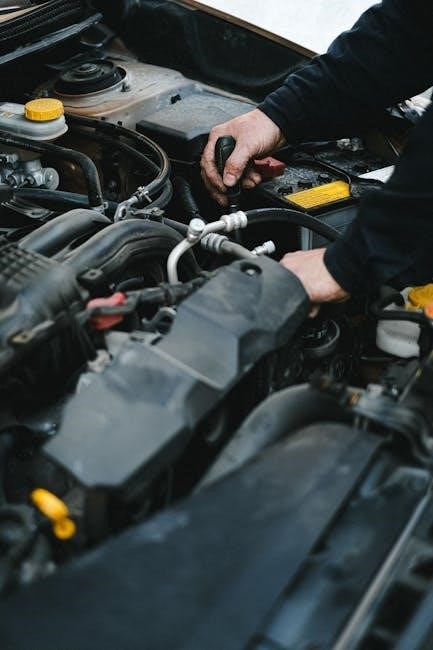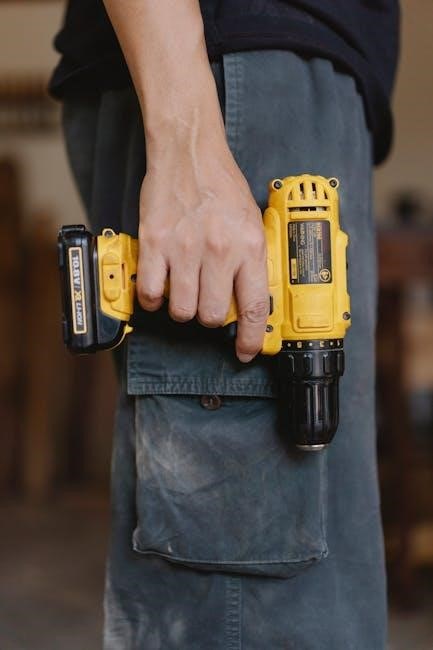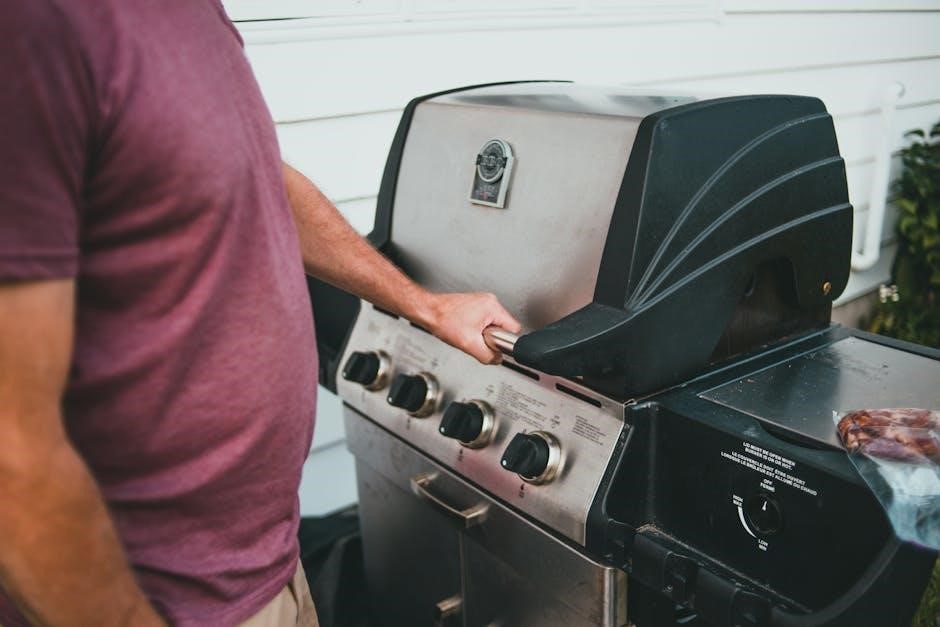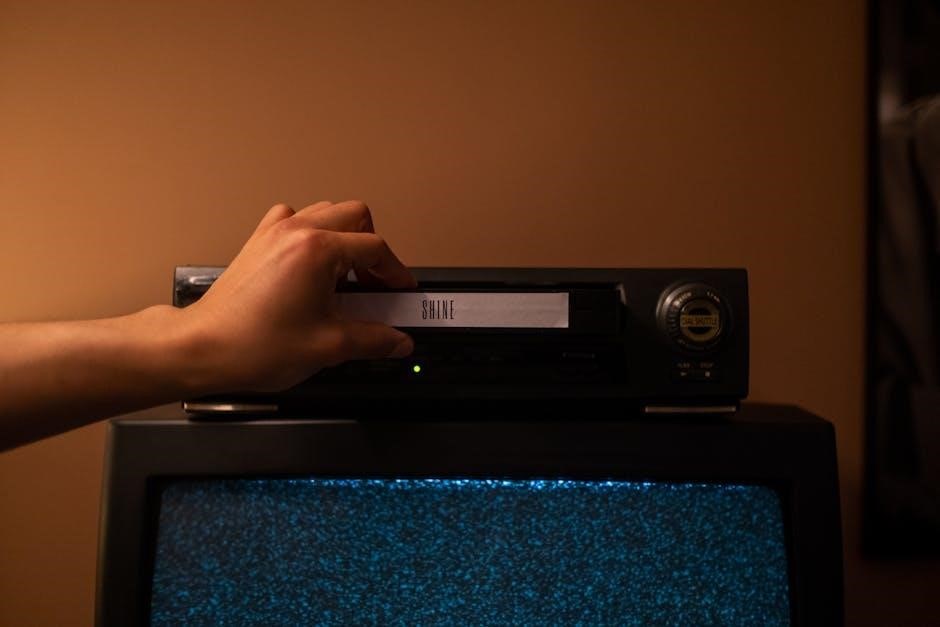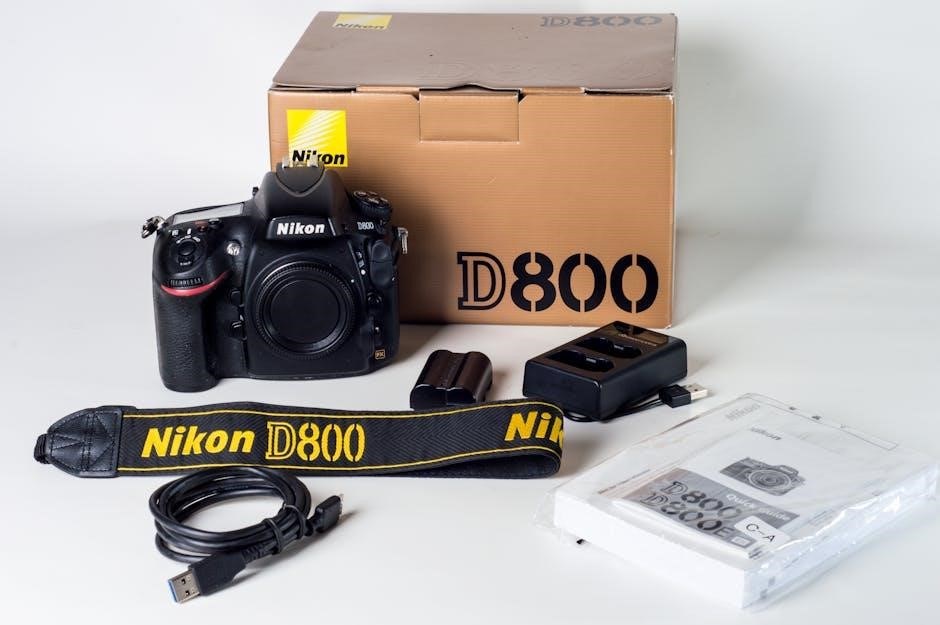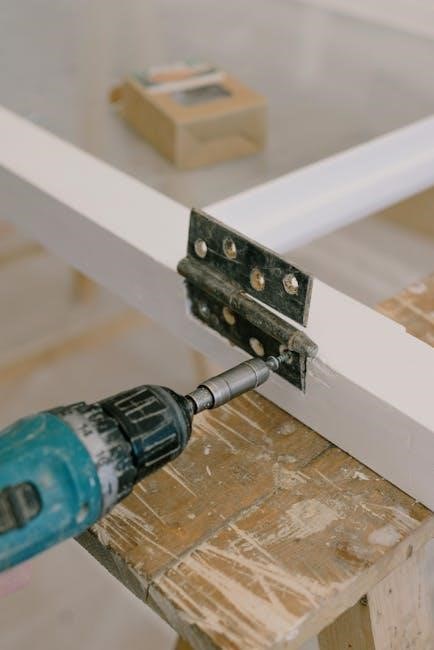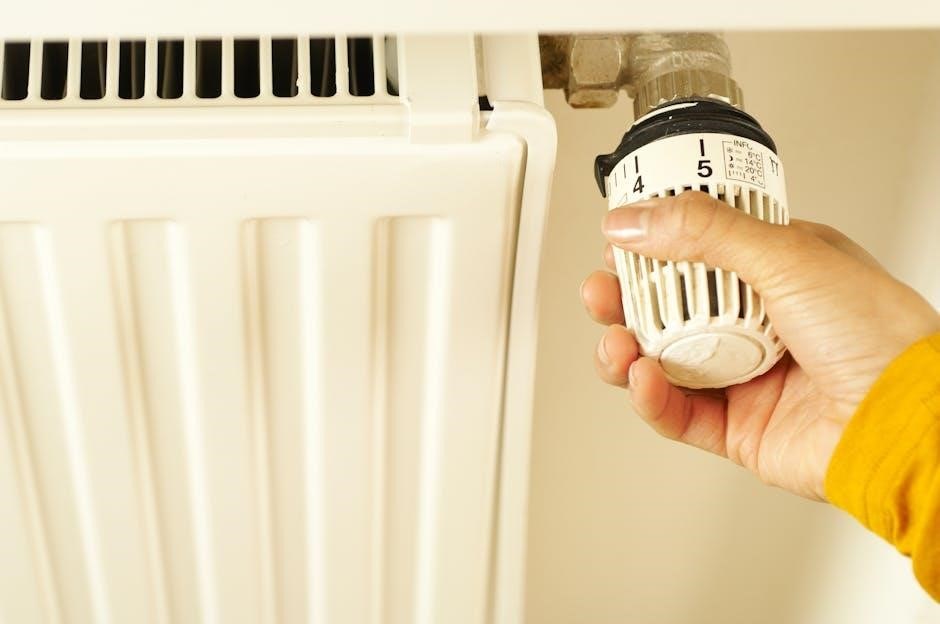Overview of the Vanguard 23 HP Engine Manual
The Vanguard 23 HP Engine Manual offers comprehensive operation, maintenance, and troubleshooting guidelines for the V-Twin engine, ensuring optimal performance and safety.
Available as a PDF, it includes key specifications and safety measures, making it indispensable for users.
1.1 Key Features and Specifications
The Vanguard 23 HP Engine is a robust OHV V-Twin horizontal shaft engine, designed for durability and fuel efficiency. It features a compact design, making it ideal for various applications. The engine boasts a gross horsepower of 23 HP, with a reliable cooling system and low oil consumption. Key specifications include a displacement of 674cc, a maximum torque of 36.4 ft-lbs, and a fuel capacity of 5 quarts. The manual provides detailed oil capacity guidelines, recommending 1.5 quarts of SAE 30 oil for optimal performance. It also outlines fuel consumption rates, ensuring efficient operation across different load conditions.

Safety Information and Precautions
The Vanguard 23 HP Engine Manual emphasizes critical safety measures to prevent accidents and engine damage. Always add oil before starting the engine to avoid irreversible damage.
2.1 Essential Safety Guidelines for Engine Operation
The Vanguard 23 HP Engine Manual outlines critical safety measures to ensure safe operation. Always add oil before starting the engine to prevent damage, as engines shipped without oil require proper lubrication. Avoid operating in enclosed spaces to prevent carbon monoxide buildup. Wear protective gear, including gloves and safety glasses, when handling the engine. Never modify the engine without authorization, as this can void the warranty and create hazards. Follow all instructions carefully to minimize risks and ensure optimal performance. Proper adherence to these guidelines is essential for user safety and engine longevity.

How to Obtain the Vanguard 23 HP Engine Manual
The Vanguard 23 HP Engine Manual can be downloaded as a PDF from official sources by searching with your engine’s model number or using the Vanguard Power Code.
3.1 Downloading the PDF Manual from Official Sources
The Vanguard 23 HP Engine Manual is readily available for download as a PDF from the official VanguardEngines.com website. Users can access the manual by searching with their engine’s specific model number, which is typically an 11- or 12-digit code stamped directly on the engine. The PDF format ensures compatibility with any device, providing easy access to critical information. The manual includes detailed safety guidelines, operational instructions, and maintenance tips to ensure the engine runs efficiently. Downloading from official sources guarantees authenticity and the most up-to-date information for optimal performance and safety.

Maintenance and Repair Instructions
The manual provides detailed maintenance schedules, oil capacity (6.7 liters), and fuel consumption rates for optimal performance. It also includes repair kits like the 9000A for non-Oil Guard engines.
4.1 Oil Capacity and Fuel Consumption Specifications
The Vanguard 23 HP engine manual specifies an oil capacity of 6.7 liters, ensuring proper lubrication for optimal performance. Fuel consumption is rated at 6.7 liters per hour under full load conditions. These specifications are crucial for maintaining engine health and longevity. Regular oil changes and monitoring fuel levels are essential to prevent damage and ensure efficient operation. Additionally, the manual recommends using the correct grade of oil and fuel to meet engine requirements. Adhering to these guidelines helps maintain warranty validity and prevents premature wear on engine components. Proper maintenance ensures the engine runs smoothly and reliably over time.

Troubleshooting Common Issues
The manual provides detailed troubleshooting steps for common issues like engine stalling or poor performance. It guides users to check spark plugs, air filters, and fuel lines for blockages or damage, ensuring quick resolution.
5.1 Diagnosing and Resolving Engine Problems
The manual outlines a systematic approach to diagnosing engine issues, such as poor performance or stalling. It advises checking spark plugs for wear and ensuring proper air filter maintenance. Users are guided to inspect fuel lines for blockages and verify correct carburetor adjustments. For oil-related problems, the manual specifies the correct oil capacity and viscosity to prevent engine damage; Detailed troubleshooting charts help identify root causes, while step-by-step repair instructions ensure issues are resolved efficiently. Always refer to the manual for accurate diagnoses and safe, effective solutions to maintain engine health.

Engine Model Number and Parts Identification
The engine model number, an 11- or 12-digit code stamped on the engine, is essential for identifying parts and accessing the correct manual. Always verify the number before ordering components or referencing documentation to ensure accuracy and compatibility.

6.1 Locating and Understanding the Model Number
The model number is a unique 11- or 12-digit code stamped directly on the engine, typically near the engine block or cylinder. It is crucial for identifying parts and accessing the correct manual. For older engines or non-standard models (e.g., WM, ZZ, 19, 23D), the number may differ. If the model number has only , a zero must be added to the front (e.g., 098902) for system recognition. Always verify the number before ordering parts or manuals to ensure accuracy. For pre-1965 engines, refer to the Antique Engine Manuals FAQ for assistance.

Illustrated Parts List and Repair Kits
The Illustrated Parts List provides detailed diagrams and descriptions of all engine components, organized by frames for easy identification. Repair Kits are essential for maintenance.
7.1 Navigating the Parts List for Maintenance and Repairs
The Illustrated Parts List is organized by frames, with detailed diagrams and descriptions for each component. Users can identify parts by their locations in the diagrams.
The list covers all assemblies, including those not used on every engine. Repair Kits are highlighted for common maintenance tasks.
- Use the model number to search for specific parts.
- Parts shown without text may not apply to your engine.
- For older models, use “99” as the trim number if needed.
This system ensures accurate part identification for efficient repairs and maintenance.
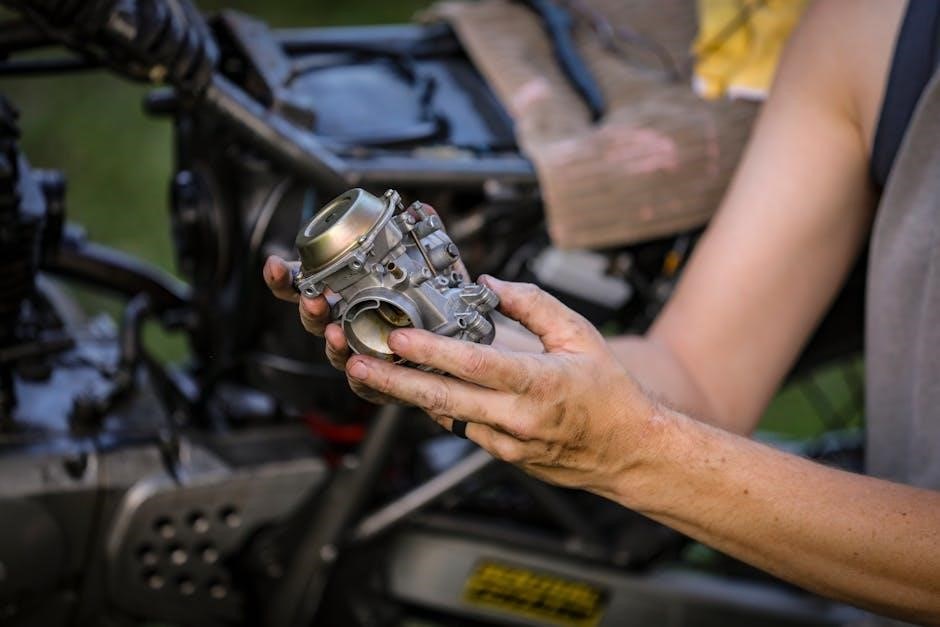
Additional Resources and Support
The Vanguard 23 HP Engine Manual directs users to customer service for technical inquiries. Additional resources include online repair guides and support websites for troubleshooting and maintenance.
8.1 Accessing Technical Guides and Customer Service
For the Vanguard 23 HP Engine, users can access technical guides and customer support through the official website. The manual provides detailed instructions for finding model-specific resources. By visiting the Vanguard support page, users can download PDF manuals, illustrated parts lists, and repair guides. Additionally, customers can contact the Briggs & Stratton customer service team for technical inquiries or troubleshooting assistance. The website also offers FAQs and instructional videos to help users resolve common issues. This comprehensive support ensures optimal performance and longevity of the engine.
The Vanguard 23 HP Engine Manual is a vital resource for proper engine operation and maintenance. It ensures optimal performance and longevity while adhering to safety standards.
9.1 Maximizing Engine Performance with Proper Manual Usage
Proper usage of the Vanguard 23 HP Engine Manual ensures optimal performance, longevity, and safety. By following the manual’s guidelines, users can perform routine maintenance, troubleshoot issues, and adhere to safety protocols. The manual provides detailed instructions for oil changes, fuel consumption, and model-specific adjustments, ensuring the engine operates efficiently. Regular maintenance, as outlined, prevents wear and tear, while troubleshooting tips help resolve common issues quickly. Adhering to the manual’s recommendations enhances engine efficiency and extends its lifespan, making it an indispensable resource for operators seeking reliable and consistent performance. Proper manual usage is key to maximizing the engine’s potential.
